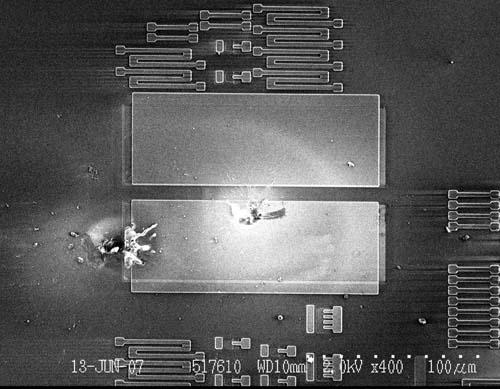The modern electronics consumer is a demanding, discerning individual. The demands placed on any product are extensive; end users expect a wide range of functionality, with high reliability, at low cost. A device as ubiquitous as a smartphone is capable of facilitating transcontinental data transfer, displaying cutting edge graphics, and performing feats of mathematical might, all in a package small enough to fit into a pocket – and at a price point low enough not to empty said pocket. Modern electronic systems require hundreds, if not thousands, of components, all working together in concert to provide the functionality consumers have come to rely on; from the sheer computing power of a cutting-edge microprocessor to the simplicity of a passive capacitor, each component is vital to a device’s operation, since extraneous or redundant parts are trimmed during design in order to minimize costs. When one of these components fail – even one as minor as a surface mount resistor – a device can go from a modern marvel of technology to an extremely expensive inert hunk of plastic and metal. Determining why a device failed is often an excellent first step towards improving the reliability of future generations of products; electronic component failure analysis is, therefore, a key component in the race for continuous improvement of electronic devices.
While the complexity of modern electronics allows the versatility and functionality end users expect, it can make it difficult to determine where to start in attempting to isolate a failure. A circuit board may be hundreds of square inches of densely packed discrete components, integrated circuits, and wiring; a schematic view may be so intricate as to require several feet of paper to print out. In these cases, electronic component failure analysis gains a whole new aspect of complexity; an analyst must be able to isolate the failing component amongst a plethora of other devices. Analyzing each component inside a device is not a particularly effective approach, nor is it an efficient use of time; exhaustive testing could require hours of an analyst’s time and produce very little actionable data. In order to perform a successful analysis, one must first narrow the field of possibilities to create a more manageable test plan.
By examining a device’s history and reported failure mode, an analyst can create a much more limited list of potential failure mechanisms; through experience, the analyst may choose one or two theories that are the most plausible, in doing so limiting the number of potentially failing components. This process often involves poring over the layouts and schematics for a given product; by getting an in-depth look at the way a device is constructed and how the circuit is intended to work, an analyst can more easily identify likely points of failure. Once an analyst has developed a working theory, the failure analysis project proceeds like any other scientific endeavor; by gathering supporting data.
In order to prove their theory, an analyst must be able to provide concrete data pinpointing the failing component. Sometimes, an analyst might be able to use tools like thermal imaging to generate this data (for example, by identifying a component that is overheating as a result of a short-circuit); in other instances, it is necessary to electrically isolate a potentially failing component from the rest of the circuit. Isolating a failure might be as simple as removing components from the board and checking to see if the reported failure is still present; in more complex cases, it may be necessary to carefully cut traces on a board in order to isolate a device from other parts of the circuit. Immediately following every circuit modification, additional electrical testing is necessary to determine whether the correct component has been identified; once the failing device has been found, failure analysis of the individual electronic component can begin.
While the most glamorous part of any electronics component failure analysis project is the moment where an analyst produces the perfect image or bit of test data that inarguably identifies the root cause of a device’s failure, there is a substantial amount of work that goes into a project before that culminating instant of victory. Though an analyst tracing through schematics, removing components from the board, hunching over a test bench and taking readings off multimeters and curve tracers to determine which component among hundreds may never get the glitzy Hollywood treatment on prime-time television (despite countless attempts to sell a script for the pilot episode of Chip Scale Investigators), these uninspiring tasks are nevertheless a fundamental part of the failure analysis process.


